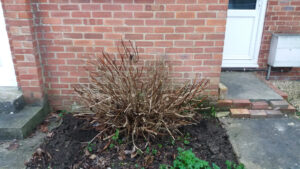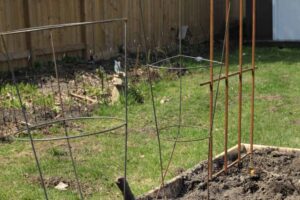
Dahlias are popular summer and fall flowers grown in many home gardens for their vibrant blooms that come in a wide range of colors, shapes, and sizes. The tuberous roots, also called tubers, that dahlias grow from are planted in spring to produce beautiful flowers throughout the growing season.
However, it’s not uncommon for dahlia tubers to sometimes break or get damaged during storage over winter or the planting process in spring. This can leave gardeners wondering – will broken Dahlia tubers grow?
The answer is that it depends on the type and severity of the break, but some techniques can help encourage growth even from damaged tubers.
Reasons Dahlia Tubers May Break
There are a few common reasons why dahlia tubers can end up broken:
1. Frost damage over winter:
Dahlia tubers should be dug up and stored before the ground freezes in fall. If freezing temperatures occur while the tubers are still in the ground, it can cause them to crack or split from the expanding ice.
2. Drying out during storage:
Tubers need to be kept moist but not soaked during winter storage. Over-drying can make the tuber flesh brittle and prone to cracking or splitting.
3. Bruising during handling:
Dahlia tubers have thin skins that can easily bruise if the tubers are squeezed, bumped or tossed around during handling and planting. Bruises and impact points are weak areas that cracks may develop from.
4. Rodent damage:
Mice and voles sometimes chew on dahlia tubers stored in sheds or garages over winter. Even small puncture wounds from teeth can lead to cracks radiating outward.
5. Age and deterioration:
Older tubers that have been divided and replanted multiple times tend to have weaker spots and may just disintegrate from further decomposition if handled roughly.
6. Frost heave in uneven soil:
In spring, repeated freezing and thawing of the soil near the soil surface can cause lumps of dirt to suddenly pop out of the ground, taking tubers along for a rough ride and likely resulting in breaks.
Types of Breaks and Their Impact
When examining broken dahlia tubers, it’s important to assess the type and severity of the break to determine if the tuber may still be salvageable. There are a few categories:
- Surface cracks: Shallow cracks in the tuber skin are generally not a major concern and should heal over as the tuber grows. Tubers with surface cracks alone have a very good chance of sprouting and flowering normally with proper care.
- Breaks/splits <1/3 tuber: If the tuber has splits or breaks that remove less than 1/3 of the tuber mass, these pieces likely still have enough resources to allow for plant growth and flowering if the tuber is set shallowly and kept moist.
- Major breaks 1/3-2/3 tuber: Tubers that are broken into large chunks removing between 1/3 to 2/3 of the tuber may still sprout but growth will likely be stunted with reduced or no flowering. The pieces are trying to regrow with limited stored resources.
- Breaks >2/3 tuber: Heavily damaged tubers with more than 2/3 the mass removed in breaks are unlikely to have sufficient resources left to successfully re-sprout and produce a plant. These pieces are generally considered non-viable.
Fixing or Repairing Broken Tubers
For dahlia tubers with minor cracks and breaks removing less than 1/3 of the tuber, there may be things gardeners can try in an attempt to propagate the tubers and allow them to grow:
- Dust cracks with rooting hormone powder: This can help promote healing and reduce further cracking. Use a powder form, not liquid.
- Gently press cracks together: Rejoin any edges that came apart to improve vascular tissue reconnection. Use tuber sealing wax or grafting tape to hold.
- let dry 2-3 days before planting: Allows wound drying to reduce rot risks compared to immediate planting.
- Plant shallowly: Setting broken tubers just below soil level versus deep planting gives roots less distance to travel up.
- Water carefully: Keep soil consistently moist but not soaked to avoid further cracking from swelling and shrinking.
- Stake/support well: The breaking point is a weakness, so provide support to prevent wind rocking or storm damage in vulnerable early growth stages.
- Check soil nutrients: Ensure soil has balanced NPK to support robust new growth from limited tuber resources. Side dress with compost or fertilizer as needed.
- Consider growing on: For heavily damaged tubers, it may be better to attempt growing new plants directly from offsets or tuber cuttings rather than planting the broken chunks.
Conclusion
With care and optimizing growing conditions, dahlia tubers with minor breaks do stand a reasonable chance of not only re-sprouting but also flowering normally with a bit smaller overall plant size compared to an intact tuber. Patience is key though, as the healing and regrowth process from a damaged starting point will take longer than an undamaged tuber. By taking the right steps, gardeners can potentially still enjoy beautiful dahlia blooms even from tubers that faced some winter damage.







